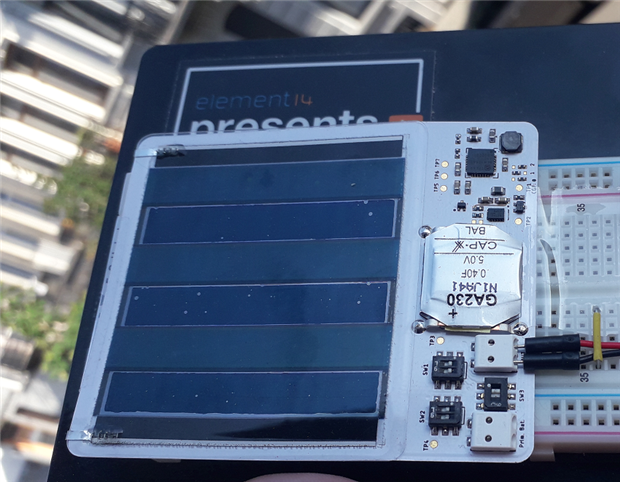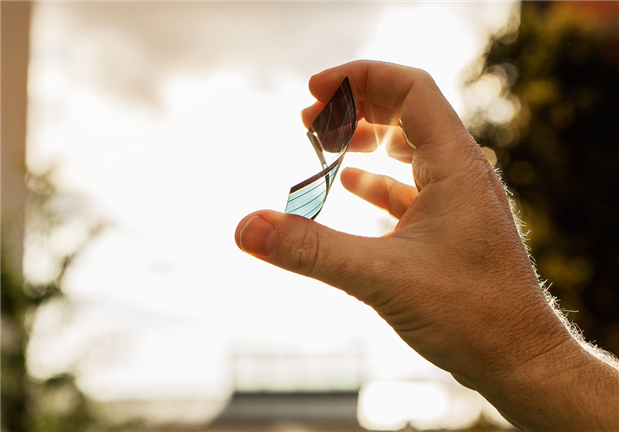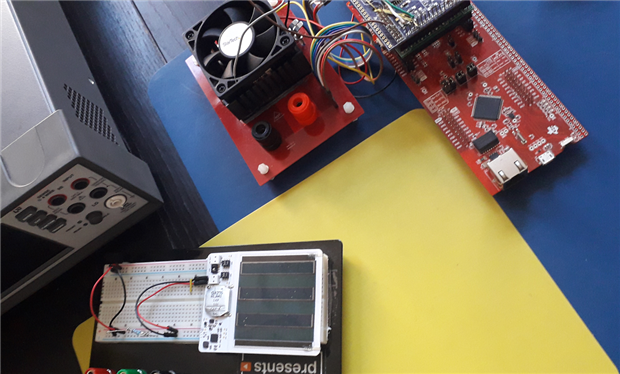I got a preview of a light harvesting kit from Epishine and element14. It's a combination of a flexible solar cell and a energy collection circuit.
I haven't used products from Epishine before and I'm not affiliated. I'm going to review the kit with open mind (and high excitement).
I've reviewed microcontroller circuits that are designed to use harvested energy. This is the first time I have a power circuit that specialises in harvesting energy.
The Evaluation Kit
The kit is named "Evaluation kit for Epishine Light Energy Harvesting".
It's part solar cell, part energy collector.
image source: me
The energy collector is a circuit that will accept very low energy input (in this case, a small solar cell), and collect that energy in a super cap.
Once the collected energy is sufficient, you can use it to power an electronic circuit.
It can - temporarily - provide decent power. Way more than what the lower energy source by itself can deliver.
This is't unique. There are energy collectors and joule thieves around for a while.
The solar cell is rather spectacular though. It's a flexible cell - printed on a sheet that looks like an overhead slide.
The print is organic material (Epishine calls it organic electronics and photovoltaics).
The sheet has the thickness and flex of one side of a paper-laminating shell (my estimate).
image source: preview of the kit's product page
The PCB is flexible and thin too. Not as flexible as the solar panel, but the two stacked together show how thin the whole package can be.
image source: preview of the kit's product page
Main specifications:
- 1.8 to 3.3 V
- 300 mA max
- can be backed up by a battery, or can extend main battery life
Epishine the Company
I have this info from the internet - from the company website. I'm adding it to the intro because they aren't a household name.
Feel free - as reader or as Epishine representative - to correct and refine.
They are a young Swedish company, with a long term goal to manufacture market-competitive sheet-printable flex solar cells (and the machines capable of printing those).
At this moment, they design solutions that use the flexible cell technology in specific lighting conditions - such as indoor and ambient light. With the goal to avoid batteries or prolong battery life.
How to Evaluate the Kit?
I'm going to focus on the electronic performance.
- Charging profile
- How it behaves under load, with and without light
- Discharging profile
- an application
If you have specific requests, put them in the comments below*
Now off to the real work
image source: me
*no promises - but if it fits the design's goal and ignites my interest, yes please
| Related blog |
|---|
| Pt 1: intro |
| Pt 2: Circuit Analysis |
| Pt 3: Charge and Discharge |
| Pt 4: Battery Backup |
| Pt 5: test points |





Top Comments
-

jc2048
-
Cancel
-
Vote Up
+3
Vote Down
-
-
Sign in to reply
-
More
-
Cancel
-

Jan Cumps
in reply to jc2048
-
Cancel
-
Vote Up
+3
Vote Down
-
-
Sign in to reply
-
More
-
Cancel
-

jesni
in reply to Jan Cumps
-
Cancel
-
Vote Up
+5
Vote Down
-
-
Sign in to reply
-
More
-
Cancel
Comment-

jesni
in reply to Jan Cumps
-
Cancel
-
Vote Up
+5
Vote Down
-
-
Sign in to reply
-
More
-
Cancel
Children